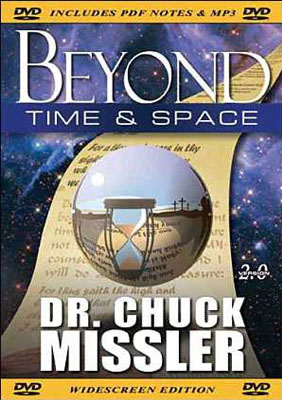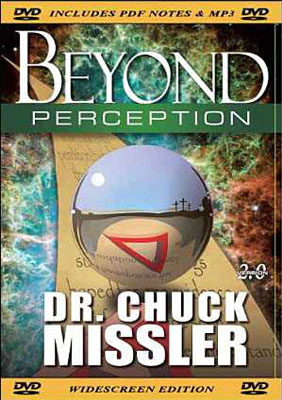One hundred years ago, Albert Einstein published a series of papers that would transform the way we see the universe. Scientists call 1905 Albert Einstein's annus mirabilis, or year of wonders. Today, the world is celebrating the centennial anniversary of those revelations, which included Einstein's theory of special relativity and the famous equation E=mc2. In honor of Einstein's work, the United Nations has declared 2005 to be the World Year of Physics.
Einstein's theory of relativity resulted in significant scientific and technological advances. The mathematical formalism of relativity based on the universal constancy of the speed of light intermingled space and time into a four-dimensional continuum. His ground-breaking work provided the foundation for modern physics and revolutionized what scientists believe about space, time, light, and matter.
Physics2005 Conference
Dr. Michael Murphy, a Research Associate at the Institute of Astronomy in the University of Cambridge and a Research Fellow of Darwin College in Cambridge, recently spoke on the topic of physical constants at the Physics2005 Conference held at Warwick University.
Physical constants, such as the speed of light in a vacuum, are one of the cornerstones of modern physics. However, for the past five years Dr. Murphy and his colleagues have been studying possible variations in the fundamental constants of nature. His research, which has been described as the most detailed survey ever performed, suggests that some of the physical constants could be changing.
"We are claiming something extraordinary here," said Dr. Murphy, "The findings suggest there is a more fundamental theory of the way that light and matter interact; and that special relativity, at its foundation, is actually wrong. It could turn out that special relativity is a very good approximation, but it's missing a little bit. That little bit may be the doorknob to a whole new universe and a whole new set of fundamental laws."
Dr. Murphy used the largest optical telescope in the world, the Keck telescope on Mauna Kea in Hawaii, to study light from distant quasars. The data he collected suggests that the "fine structure constant" may be changing over time.
The fine structure constant governs the electromagnetic force which holds all atoms and molecules together. The speed of light depends on the fine structure constant. If the fine structure constant actually varies with time, then the speed of light probably does as well.
Measuring the Speed of Light
Throughout history our knowledge of how light travels has changed. Greek philosophers generally followed Aristotle's belief that the speed of light was infinite. Even Johannes Kepler (1571-1630), the German astronomer and mathematician best known for his laws of planetary motion, maintained the majority view that light was instantaneous. Rene Descartes (1596-1650), famous for his work in both philosophy and mathematics, also believed in the instantaneous propagation of light.
It wasn't until 1677 that a Danish astronomer named Olaf Roemer announced that the anomalous behavior of the eclipse times of Jupiter's inner moon could be accounted for by a finite speed of light. It took another half century for that notion to be accepted. It wasn't until 1729 that James Bradley's independent confirmation finally ended the opposition to a finite value for the speed of light. Roemer's work, which had split the scientific community for 53 years, was finally vindicated.
The velocity of light is widely regarded as the inviolate constant which affects all things: from our knowledge of astronomy to the behavior of subatomic particles. The assumption that the speed of light is constant is at the foundation of modern physics. Physicists have what is called a "standard model" of the universe which allows them to explain all observed phenomena. This standard model cannot explain variations in the constants and so, if these theories are correct, the standard model would need a complete overhaul.
Was Einstein Wrong?
So is it possible that Einstein was wrong? Could it be that the speed of light is not constant? The speed of light has been measured more than 163 times by 16 different methods over the past 300 years. By reexamining the known experimental measurements to date, a handful of scientists have concluded that the speed of light is in fact slowing down.
Barry Setterfield and Trevor Norman were among the first scientists to examine this possibility, and their findings have been reported in this news journal since 1993. Their theories have interesting implications for cosmology-the metaphysical study of the origin and nature of the universe.
If scientists such as Barry Setterfield are correct, and the speed of light has been slowing down, it might indicate that the age of the universe is much younger than the billions of years required for evolution to take place. Those skeptical of the Biblical account of history have often asked the question: If the universe is between 6,000 and 7,000 years old, how is it that objects millions of light years away can be seen?
The answer to that question could be found by analyzing the decay of the speed of light. Needless to say, this view is highly controversial and the majority of physicists have rejected Setterfield's hypothesis. However, if such a theory were eventually proven correct, it would dramatically alter our concepts of the physical universe. And the remarks of Dr. Michael Murphy last month may be another small step in that direction.
For further study, please see the following briefing packages: Beyond Time & Space and Beyond Perception.







